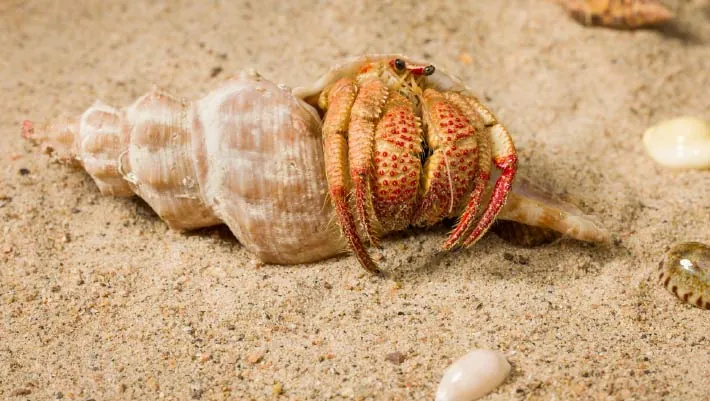
Exciting Discovery: Meet the Strawberry-Clawed Hermit Crab! New Species Unearthed Off Queensland's Coast
2024-11-12
Author: Nur
Introduction
Marine biologists from the Queensland Museum in Kurilpa have thrilled the scientific community with the discovery of a brand-new species of hermit crab—dubbed the strawberry-clawed hermit, scientifically named *Strigopagurus fragarchela*. This vibrant creature hails from the continental shelf off the southeastern coast of Queensland, Australia, and adds significant diversity to the region's marine life.
Background on the Genus *Strigopagurus*
The team, including researchers Peter Davie and Marissa McNamara, revealed that the genus *Strigopagurus* already contained five known species. Among these, two—*Strigopagurus strigimanus* and *Strigopagurus elongatus*—are unique to temperate southern Australia, while *Strigopagurus bilineatus* is only recorded in tropical Queensland. Notably, the other two species have not yet made appearances in Australian waters.
Discovery Process and Characteristics
Trawling surveys conducted recently in the shelf waters of southeastern Queensland uncovered several strikingly colored specimens that led to the identification of this exciting new endemic species. Found at depths of 120 to 260 meters, *Strigopagurus fragarchela* boasts some incredibly distinctive traits. Most eye-catching are its striking bright red claws, perfectly earning it the nickname "strawberry claws." Moreover, it has developed a unique method of underwater sound production, known as stridulation, akin to the chirping of cicadas.
Ecological Importance and Future Research
Dr. McNamara emphasized the significance of this identification, noting that it contributes yet another endemic species to Australia’s marine landscape, bringing the total to four within the *Strigopagurus* genus. Even better, two of these species are found exclusively in Queensland waters! While *Strigopagurus fragarchela* has only been captured through trawling, the researchers caution that much remains unknown about its ecological role. However, its presence signals the importance of maintaining healthy marine habitats, which are crucial for the vast biological communities that thrive in the continental shelf regions off southeastern Queensland.
Statements from Officials
Dr. Jim Thompson, CEO of the Queensland Museum, conveyed the vital nature of these discoveries, stating, “Our natural history collections are more than just preserved specimens; they are essential tools for scientific discovery, conservation, and public education,” underscoring the importance of documenting biodiversity for future generations.
Publication and Future Prospects
Details of this remarkable find have been published in the latest issue of the *Memoirs of Queensland Museum – Nature*. Keep an eye on the depths of Australia’s stunning marine ecosystems—who knows what other wonders await discovery!


 Brasil (PT)
Brasil (PT)
 Canada (EN)
Canada (EN)
 Chile (ES)
Chile (ES)
 España (ES)
España (ES)
 France (FR)
France (FR)
 Hong Kong (EN)
Hong Kong (EN)
 Italia (IT)
Italia (IT)
 日本 (JA)
日本 (JA)
 Magyarország (HU)
Magyarország (HU)
 Norge (NO)
Norge (NO)
 Polska (PL)
Polska (PL)
 Schweiz (DE)
Schweiz (DE)
 Singapore (EN)
Singapore (EN)
 Sverige (SV)
Sverige (SV)
 Suomi (FI)
Suomi (FI)
 Türkiye (TR)
Türkiye (TR)